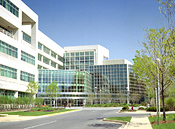 When the Lost Alaskans blog went online five years ago, we began to hear from people who were searching for friends and relatives who were committed to Morningside Hospital, some as long as one hundred years ago. We hope the Morningside Hospital Patient Database will make their search easier and answer their questions.
When the Lost Alaskans blog went online five years ago, we began to hear from people who were searching for friends and relatives who were committed to Morningside Hospital, some as long as one hundred years ago. We hope the Morningside Hospital Patient Database will make their search easier and answer their questions.
There are three types of records available. The Quarterly Reports have diagnoses and other information on patients, the Death Certificates are those who died while at Morningside, and the court records document the commitment process. There are gaps in all of the record sets so the search continues.
The database will be formally announced in January. In the meantime, give it a try and send comments and recommendations. Click on Search Patient Records and then enter at least three consecutive letters of the patient’s last name and, optionally, any part of the patient’s first name. The database searches both the name as entered as well as alternate spellings found in the records.
We owe a huge debt of gratitude to the Alaska Mental Health Trust Authority for their long-term support, especially over the past six months. The Trust made it possible for our volunteer researchers to get to record archives in Maryland, Alaska and Oregon. The entry of 45,000 records would not have been possible without Trust support.
And thanks to the volunteers who collected the information in the database. Volunteers by type of record are Meg Greene and Niesje Steinkruger (Court Records), Eric Cordingley, David Anderson and Sally Mead (Death Certificates) and Marylou Elton, Karen Perdue, Ellen Ganley and Robin Renfro (Quarterly Reports), and Deborah Smith (Alaska State Archives).
Many thanks to Doug Toelle, our project manager at Access Alaska And last, but not least, thanks to database programmer Don Kiely, web designer Jana Peirce, and data entry queen Nancy Lowe, all of whom are hugely talented and extremely patient.



